Embark on a trip down monochrome memory lane as we explore some of the most iconic and beloved games that graced the screens of Nintendo’s Game Boy.
This revolutionary console redefined handheld gaming, offering players an unparalleled library of titles to enjoy anytime, anywhere, all in a genuinely pocket-sized (admittedly, a large coat pocket!) form factor.
In this article, we’ll delve into my personal top picks, from action-packed platformers to thrilling racing experiences, with over 1000 games released, the Game Boy had something for everyone.
Tetris
Tetris, the legendary tile-matching game, may not have first arrived on the Game Boy, but it’s this version that made it a household name. This prodigious creation has been delighting gamers since its inception, with its seemingly straightforward task of rotating and aligning tumbling tetrominoes into unbroken horizontal lines.
Tetris launched for the Game Boy way back in 1989, a portable rendition of Alexey Pajitnov’s masterpiece and accompanied Game Boy releases in North America and Europe by becoming the pack-in game.
This version of Tetris shares the same gameplay mechanics as its counterparts. You strategically place falling shapes (called tetrominoes) in a 10×18 grid to form gapless horizontal lines. These lines vanish, allowing blocks above to descend.
As you progress, tetrominoes fall faster, culminating when one exceeds the grid’s upper limit. You can glimpse the upcoming block on the side, with the option to toggle this feature. Points and difficulty rise with cleared lines and the initial level you choose.
A masterful fusion of tactical prowess and lightning-fast reflexes, Tetris offers boundless hours of cranial stimulation. You find yourself enthralled in an endless pursuit to outdo your previous high scores, time and time again. With a tip of the hat to its ingenious creator, Alexey Pajitnov, Tetris reigns supreme as an all-time classic in the magnificent pantheon of video game history.
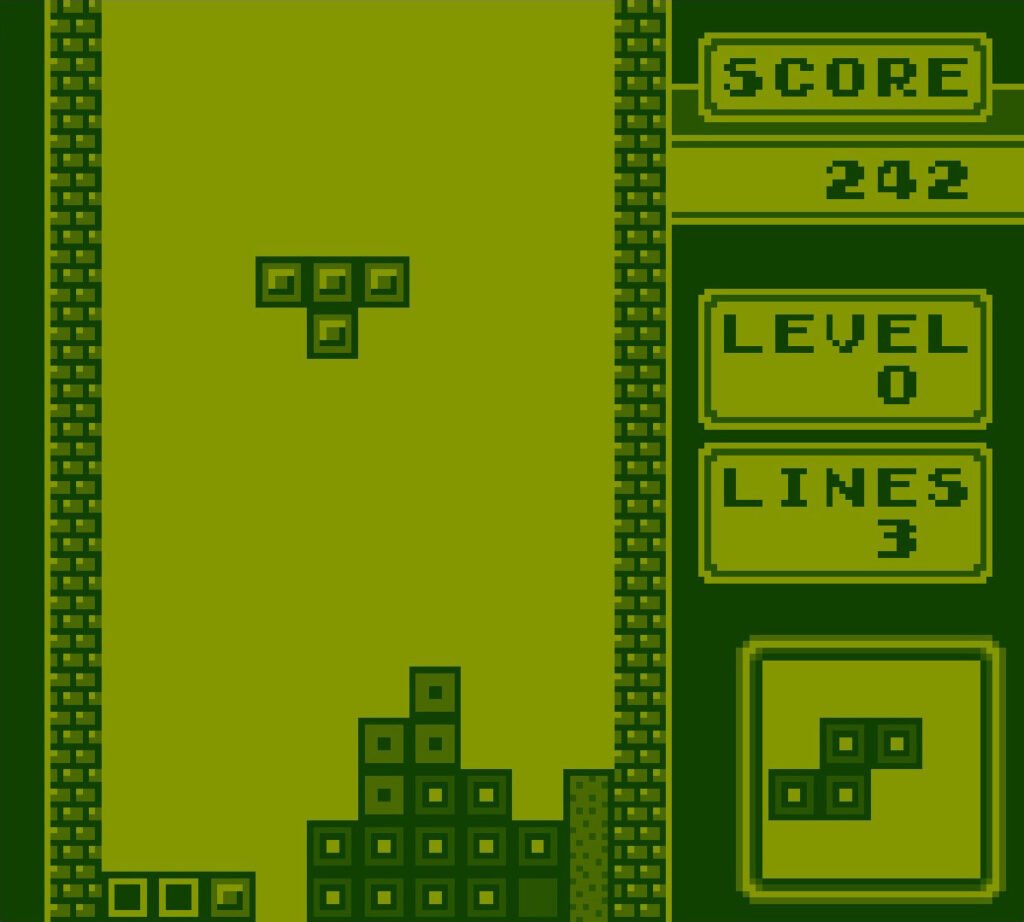
Super Mario Land 2: 6 Golden Coins
This sequel to Super Mario Land puts you back once again in Mario’s shoes, fighting to reclaim Mario Land, from the greedy Wario.
In Super Mario Land 2, your goal is to reach each level’s end, facing familiar foes like Goombas and Koopa Troopas, as well as new enemies. Some adversaries require unconventional tactics, like fireballs. Keep an eye out for Warp Pipes, coins, and ? blocks, which hide goodies and shortcuts!
Unlike its predecessor, coins don’t grant extra lives; they let you play special games for lives and power-ups. To gain lives, find hearts or become invincible by touching the floating star after defeating 100 enemies.
With 32 levels across themed zones, secret levels are accessed via alternative exits in regular levels. Each zone has a boss guarding one of the six coins. Lose all lives, and you’ll need to defeat the bosses again to retrieve the coins.
Collect all Golden Coins, and face Wario in a three-stage throne room showdown to reclaim Mario Land!
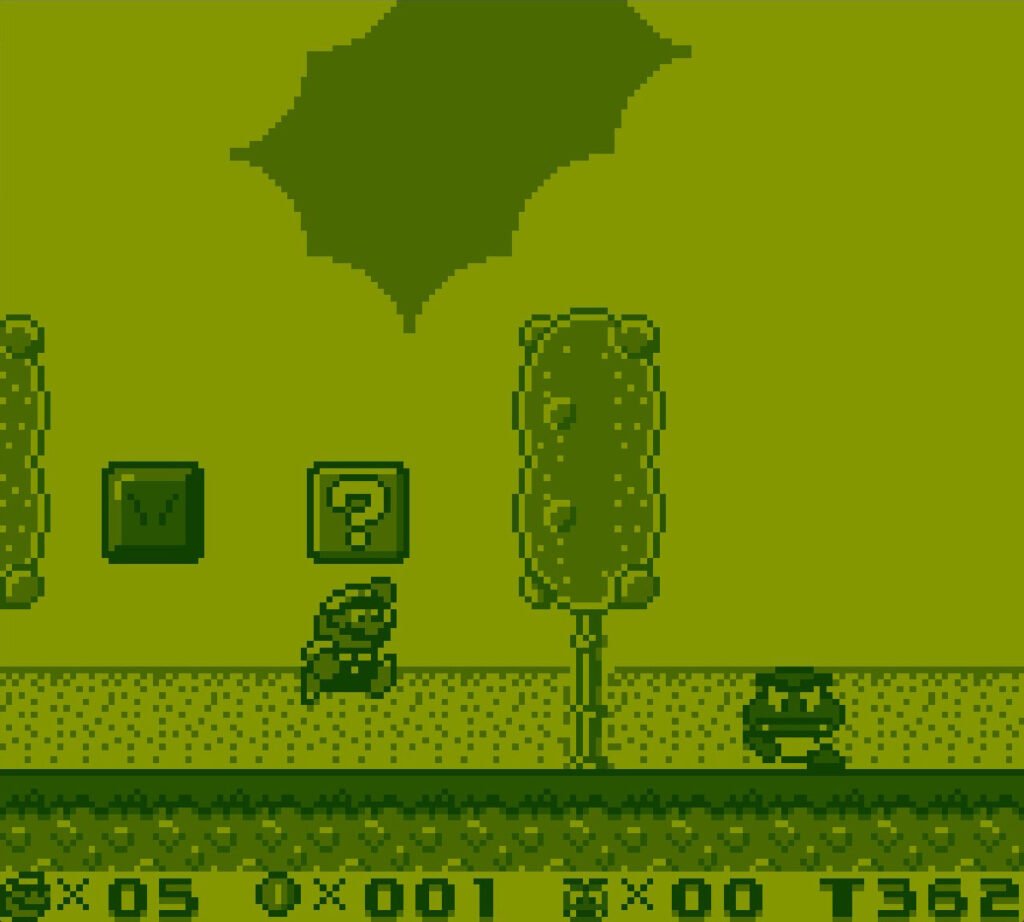
Kirby’s Dream Land
Nintendo introduced Kirby’s Dream Land in 1992, a now iconic platformer for Game Boy and the first in the Kirby series.
In this side-scrolling action platformer, you control Kirby, inhaling enemies and objects, then swallowing or spitting them out as star-shaped projectiles. Kirby can also fly by inflating himself and flapping his arms!
Featuring five levels, Kirby’s Dream Land has large “rooms” connected by doors, unlike traditional platformers’ continuous corridors. Doors act as checkpoints and sometimes lead to hidden areas or alternate paths. Conquer each level by defeating the boss at the end.
The game ends with a boss rush level, testing your skills against all previous bosses. Collect points and earn extra lives, but remember—there’s no save function.
Upon completing the game, access a harder extra game mode, with additional options for lives and vitality adjustments. Ready for some high-flying action? Give Kirby’s Dream Land a try!
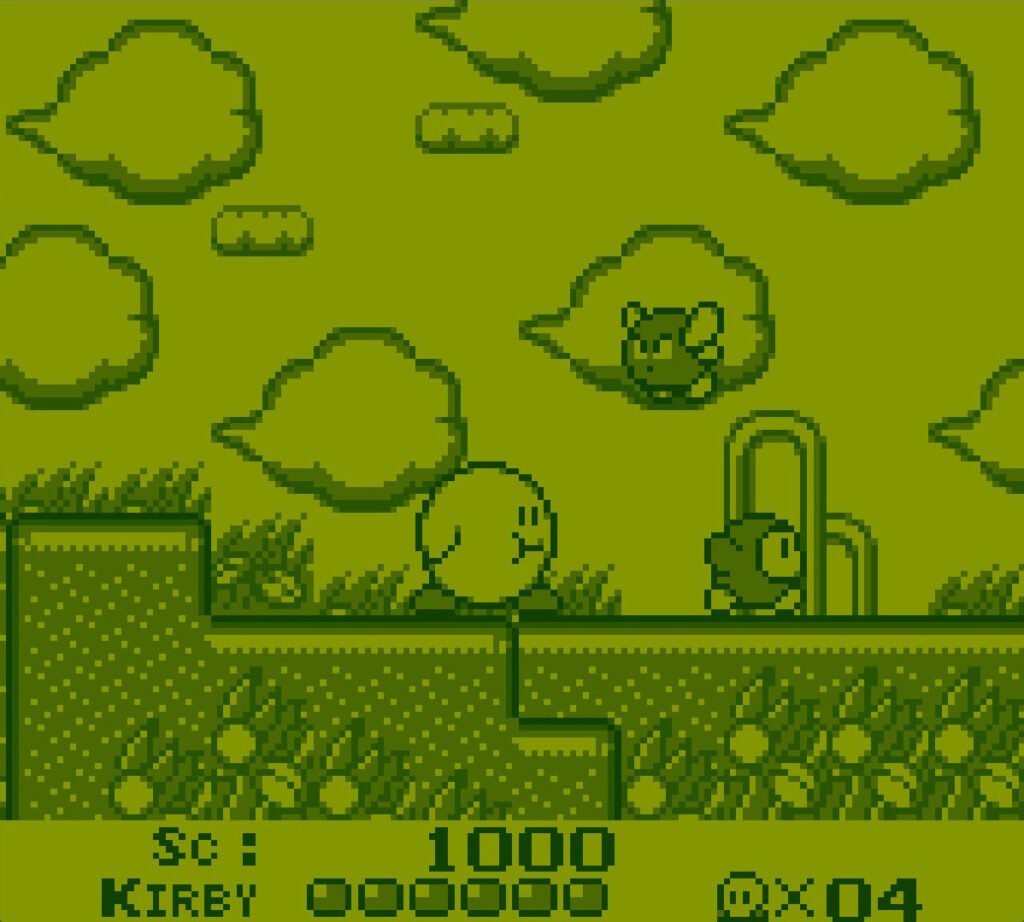
Dr. Mario
In this addictive, Tetris-style puzzle game, Mario takes on the role of a doctor, and it’s up to you to help him eliminate a bunch of pesky viruses.
Your mission is simple: destroy the viruses populating the on-screen playing field using colored vitamin capsules. As the capsules fall, move them left or right, and rotate them to match the colors. Line up four same-colored capsule halves and viruses to make them vanish. The goal is to clear the screen of all viruses and move on to the next level.
Be careful, though! If capsules fill the playing field and obstruct the bottle’s neck, it’s game over!
Dr. Mario also features a competitive multiplayer mode, where you and a friend face off in separate playing fields. Race to clear your field of viruses first, and strategically create chain reactions to send extra capsules to your opponent’s field. Win three games to emerge as the ultimate Dr. Mario champion.
Put on your lab coat, grab a controller, and get ready to crush those pesky viruses in Dr. Mario!
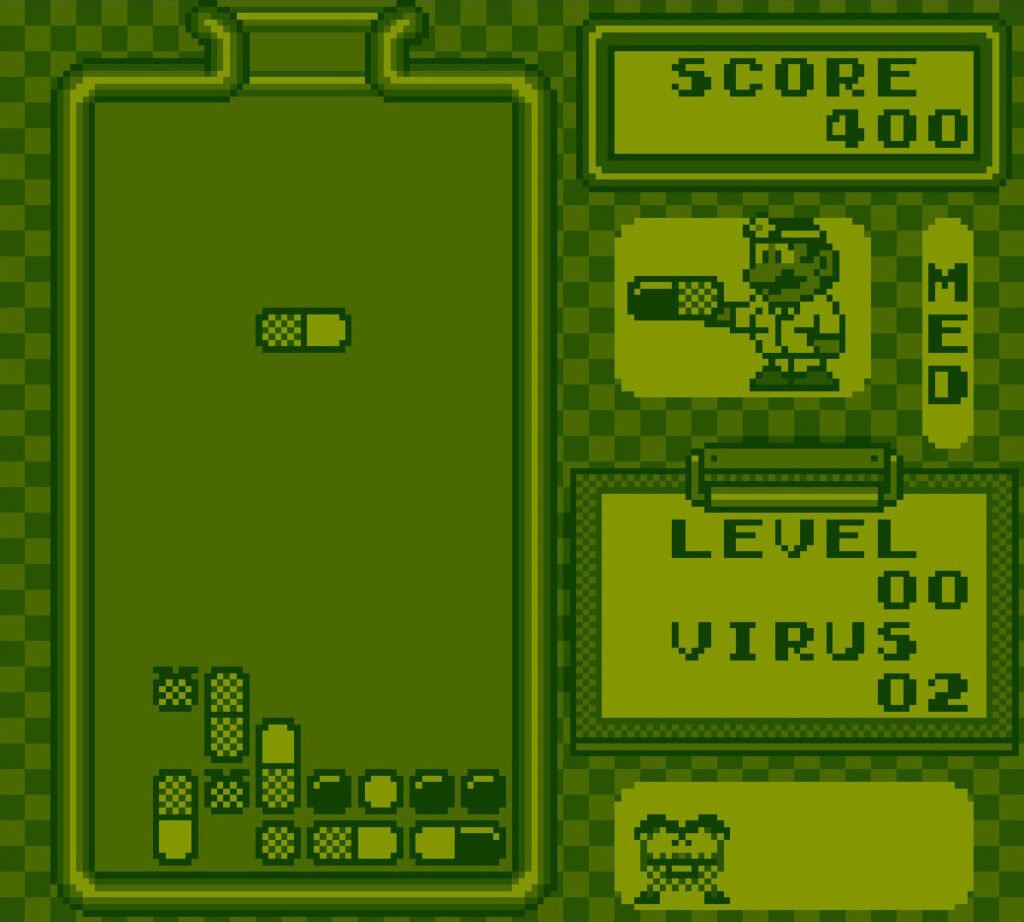
The Legend Of Zelda: Link’s Awakening
The Legend of Zelda: Link’s Awakening was the first handheld Zelda game, released in 1993. This action-adventure game has you exploring the mysterious Koholint Island and its dungeons.
As you venture deeper into the game, dungeons become larger and more challenging. You’ll face off against “Nightmare” bosses, which grow harder with each encounter. Defeating them rewards you with heart containers to boost your survivability and one of the eight instruments necessary to beat the game.
Engage in side-missions and diversions, like collecting “secret seashells” to obtain a powerful sword. Experience the first-ever Zelda trading sequence minigame, and be the first to fish or learn songs on an ocarina in a Zelda game.
Get ready to lose yourself in the captivating world of The Legend of Zelda: Link’s Awakening and embark on an unforgettable adventure on Koholint Island!
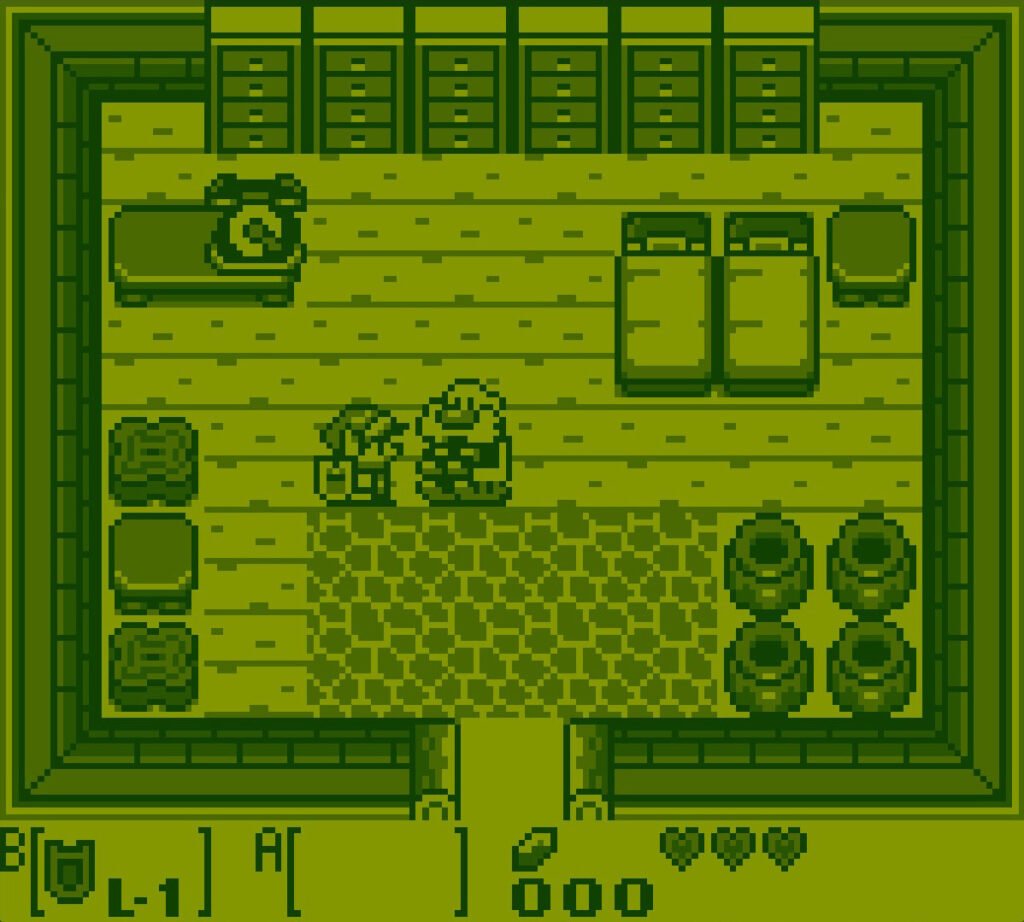
Pokemon Red & Blue
Pokémon Red Version and Pokémon Blue Version, released in 1996, are the first installments of the Pokémon video game series, developed by Game Freak and published by Nintendo for the Game Boy.
As a fledgling Pokémon Trainer, you’ll explore the vast and wondrous Kanto region, capturing and training an assortment of peculiar and enchanting creatures, with the ultimate goal of becoming the Pokémon League Champion.
Catching Pokémon is a vital part of the gameplay. To catch a wild Pokémon, you throw Poké Balls during battles, with the success rate depending on factors like the target’s HP, status effects, and the type of Poké Ball. The ultimate goal is to complete the entries in the Pokédex, a comprehensive Pokémon encyclopedia, by capturing, evolving, and trading all 151 creatures.
Captivating you with its unique blend of strategy, exploration, and camaraderie, as you build your dream team and challenge rival trainers, gym leaders, and even friends in exhilarating battles. The game’s distinctive gameplay mechanics, coupled with an engaging story, have cemented Pokémon Red & Blue as a treasured classic and pivotal moment in the Pokemon
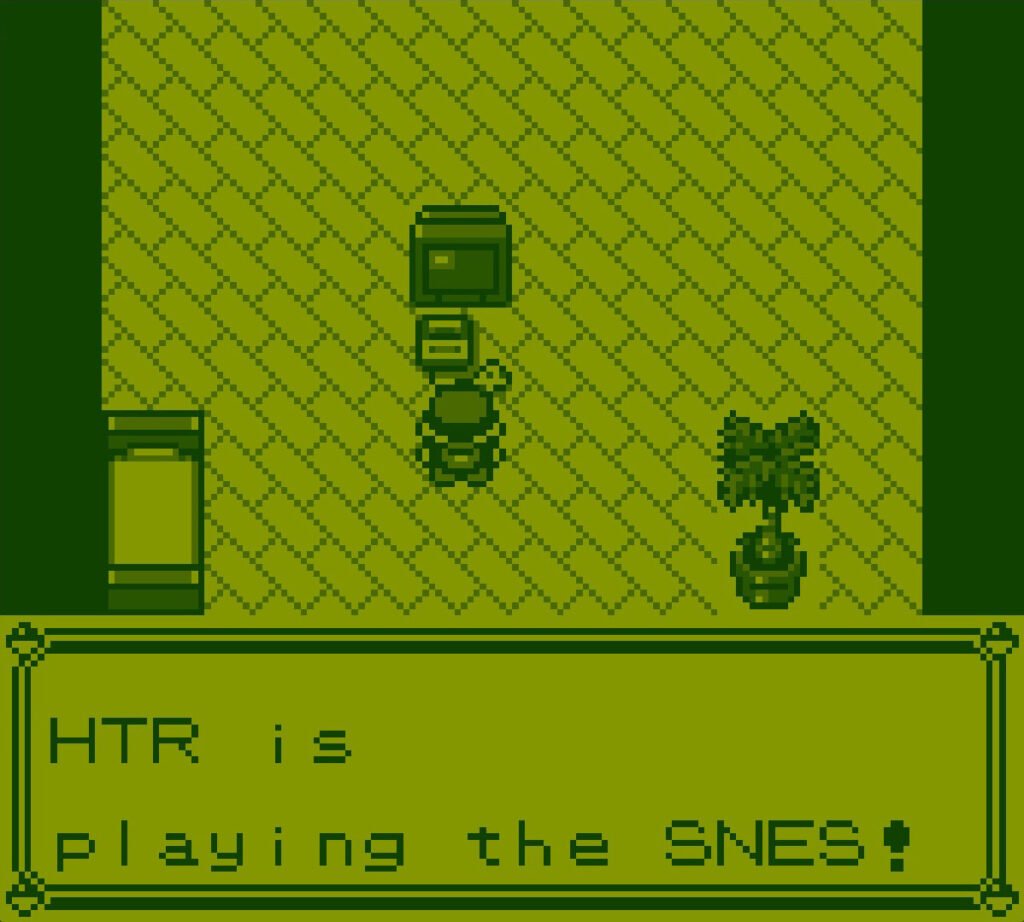
R-Type
R-Type, released in 1991 for the Game Boy, is an impressive adaptation of the classic arcade shooter, demonstrating how to successfully bring a game to Nintendo’s handheld system. This game retains the strategic gameplay and enemy pattern memorization of the original while adjusting the pace to accommodate the Game Boy’s limitations.
R-Type immerses you in a cosmic ballet of dodging, weaving, and blasting through hordes of otherworldly foes while navigating a gauntlet of intricate levels. With its formidable arsenal of power-ups and striking visual design, R-Type has earned its place as a revered classic in the shoot-’em-up genre.
The game consists of eight levels, each culminating in a boss fight. You control a small spacecraft, navigating through various terrains and battling enemies using the ship’s weapons. One of the unique features of R-Type is the Force, an auxiliary device resembling an orange glowing orb. The Force can be attached to either the front or back of the spacecraft or detached to move freely.
Ready your blasters and steady your nerves as you embark on an adrenaline-fueled escapade through the exhilarating and perilous cosmos of R-Type!
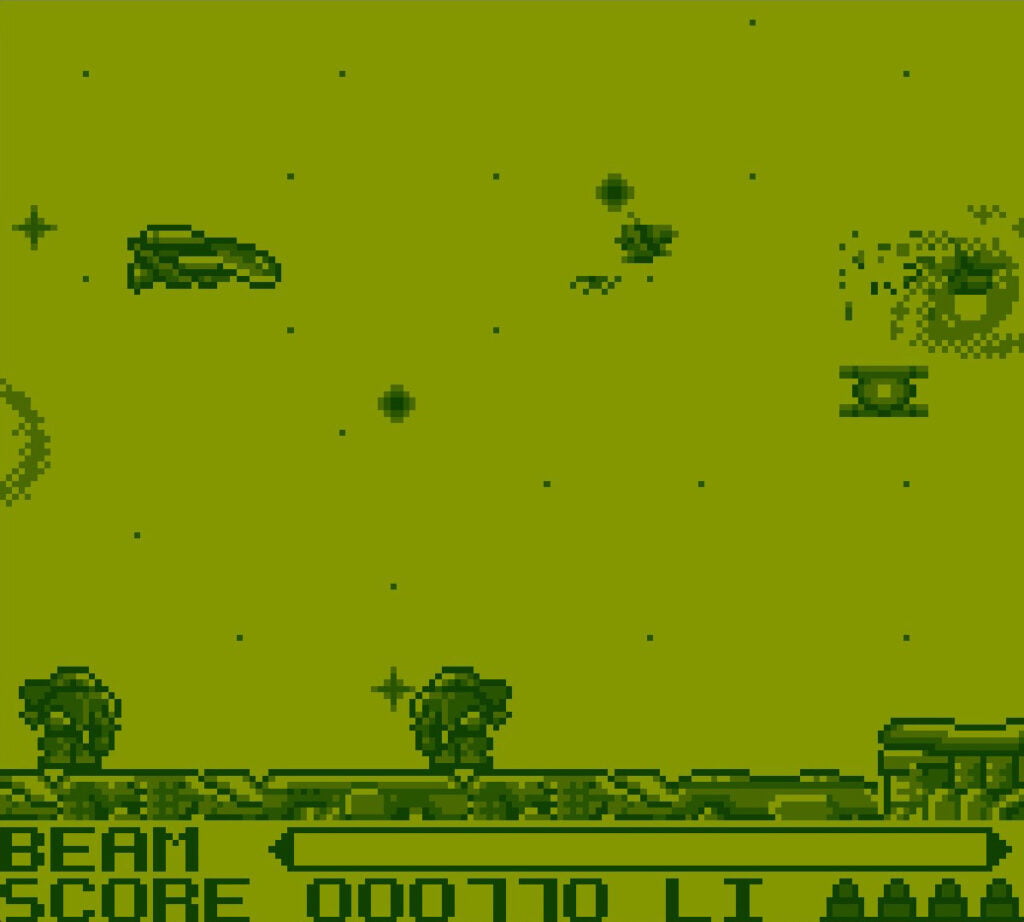
DuckTales
In 1990, the classic NES game DuckTales made its way to the Game Boy, delivering all the charm, music, and adventure of the original console release, with tailored level layouts to accommodate the handheld’s lower resolution screen.
Take the reins as Scrooge McDuck, exploring the globe and even venturing into outer space to uncover five treasures that promise to augment his vast wealth. Scrooge’s trusty cane serves as his weapon and navigational tool, enabling him to swat adversaries and interact with objects on the ground or pogo-bounce to vanquish foes from above while accessing elevated areas and traversing perilous terrain.
As you navigate the game, they can gather diamonds hidden in chests or scattered throughout levels to boost Scrooge’s fortune. Health-restoring ice cream can also be found along the way. Various beloved characters from the DuckTales series make appearances, offering clues, helpful items, or access to new zones, while others may attempt to impede Scrooge’s progress.
The Game Boy adaptation of DuckTales successfully maintains the enchanting spirit and challenges of the original, making it a fantastic handheld iteration of this cherished classic.
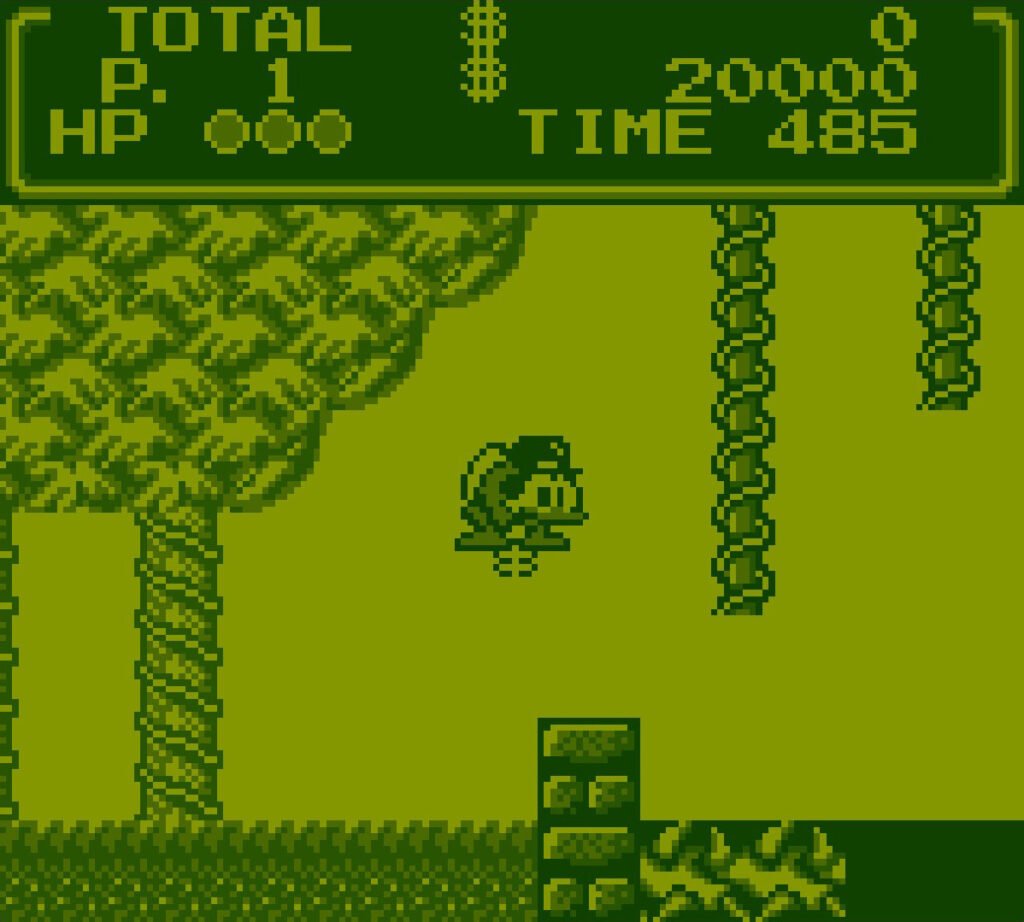
Metroid II: Return Of Samus
The iconic Metroid series made its stellar Game Boy debut with Metroid II: Return of Samus, a captivating side-scrolling action adventure that invites you to explore the mysterious planet SR388 as the intrepid Samus Aran.
Fans of the Metroid universe will be well-acquainted with the primary objective: exterminating 47 elusive Metroid creatures. An in-game detector keeps track of your progress, and as Metroids are vanquished, earthquakes lower lava levels, revealing access to deeper, hidden tunnels.
Anticipate encountering formidable adversaries at various evolutionary stages, their attacks intensifying as they mature. Metroid II introduced a plethora of innovative features, including save modules for hassle-free progress tracking and powerful new weapons like the Spazer Laser Beam and Plasma Beam – though only one beam can be equipped at a time.
The game also debuted the infinite Space Jump, opening up previously unreachable areas, as well as the Spider Ball and Spring Ball upgrades. The Spider Ball enables Samus to scale walls and ceilings, while the Spring Ball allows her to jump in her iconic Morph Ball form. These enhancements undeniably propelled the Metroid experience to thrilling new heights on the Game Boy!
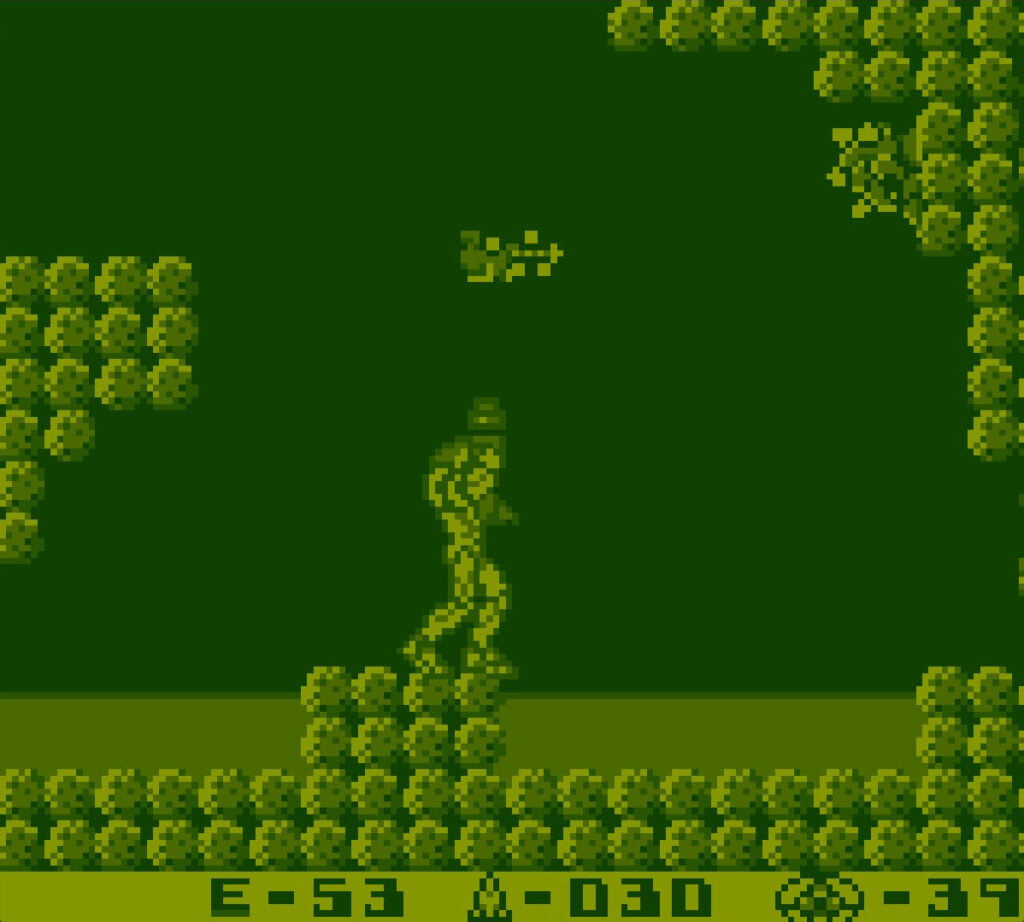
Castlevania II: Belmont’s Revenge
In 1991, the Game Boy welcomed the enthralling platformer Castlevania II: Belmont’s Revenge, a sequel to Castlevania: The Adventure. This installment enriches gameplay by introducing sub-weapons such as holy water, axes, and crosses (in the Japanese version), providing an extra layer of depth.
Taking a page from Mega Man’s playbook, you can choose to conquer four unique castles (air, plant, earth, and crystal) in any sequence, navigating treacherous trap rooms while soaking up one of the Game Boy’s most memorable soundtracks – an auditory feast that lingers long after playing.
Though the challenge presented by Castlevania II can be formidable, a password system offers a reprieve for those who are seeking a more accessible experience. Of course, intrepid gamers can always forgo this feature to put their skills to the ultimate test.
Castlevania II brings all the quality of the big-screen console version squeezed into a monochrome handheld classic.
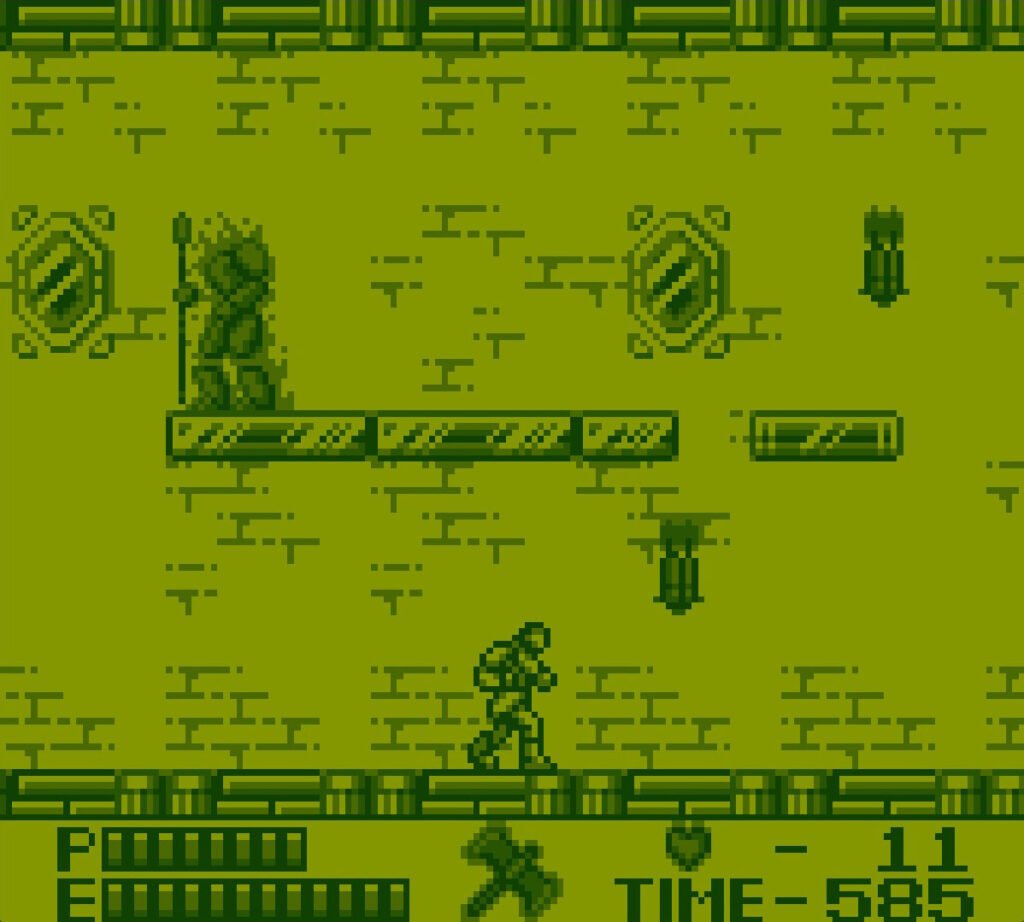
Balloon Kid
Balloon Kid, an arcade-style flying platformer, is the delightful sequel to the classic NES game Balloon Fight. In the 1-player mode, inspired by Balloon Fight’s Balloon Trip mode, you’ll guide Alice as she gracefully floats using two balloons. Maintain altitude by repeatedly tapping the A button, dodging pesky foes determined to burst your balloons or knock you out of the sky.
Your objective? Retrieve the balloons left behind by Alice’s brother, Jim, and reach the endpoint. Four formidable bosses lie in wait, which can be vanquished by detaching balloons to bounce on them or utilizing classic platformer-style jumps and stomps.
In the 2-player mode, Alice goes head-to-head with her friend Samm in a frenetic race to collect the most balloons. The Balloon Trip mode, featuring Alice in the Balloon Fighter’s role, remains largely unaltered from the original Balloon Fight, complete with its infectious BGM.
A quintessential Game Boy experience, Balloon Kid offers endless entertainment for players of all ages!
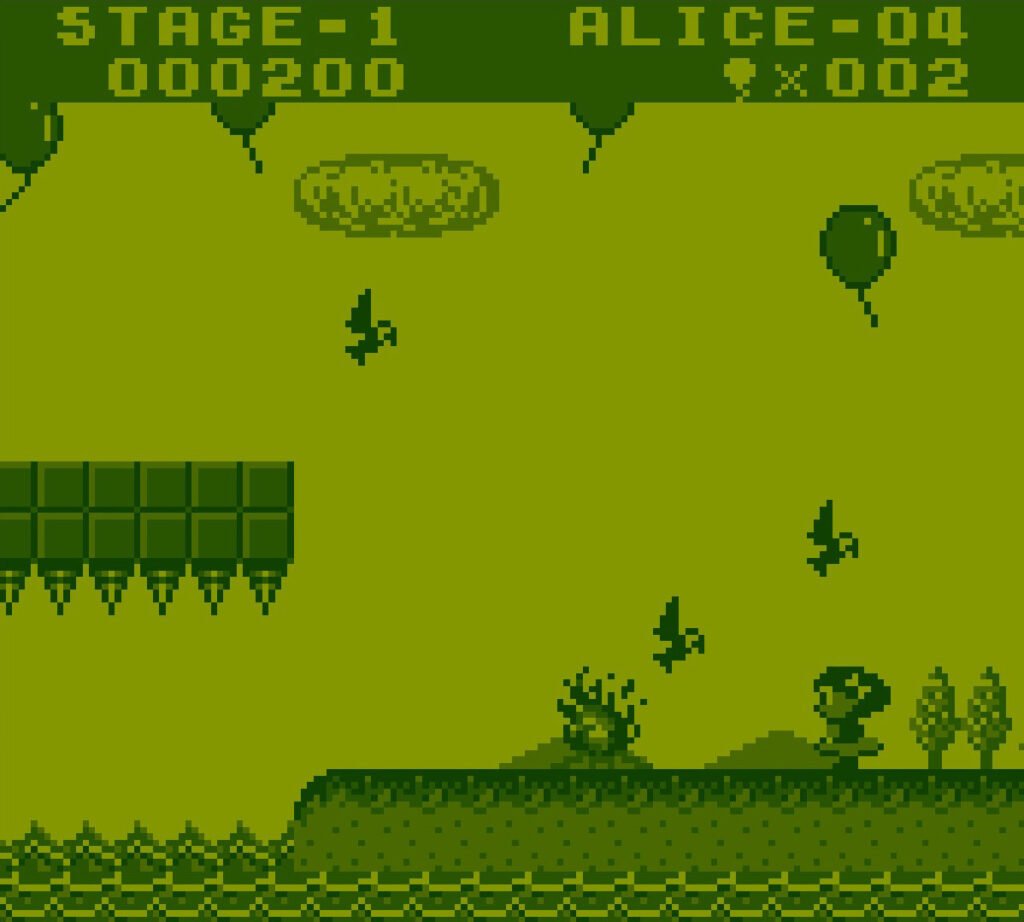
Double Dragon
Double Dragon on the Game Boy is a classic beat ’em up extravaganza, featuring the compelling tale of Billy Lee battling hordes of gang members to save his kidnapped girlfriend, Marian. This portable adaptation draws inspiration from the NES version, showcasing a similar art style and captivating music, while introducing stage changes for a faster-paced and slightly different experience.
his game offers a formidable challenge, presenting you with only three lives, treacherous death pits, and the fearsome Abobo. Expect to traverse an array of diverse environments, from gritty city streets to construction zones, dense forests, and mysterious fortresses.
Despite the Game Boy’s hardware constraints, Double Dragon masterfully combines 2D side-scrolling with full belt scrolling for an engaging gaming experience. The addition of new and extended levels further enhances its appeal, making it a must-have for any Double Dragon aficionado.
If you’re on the hunt for a top-notch brawler for your Game Boy, look no further than Double Dragon, a stellar choice that boasts impressive music, graphics, and gameplay that rivals its console counterpart.
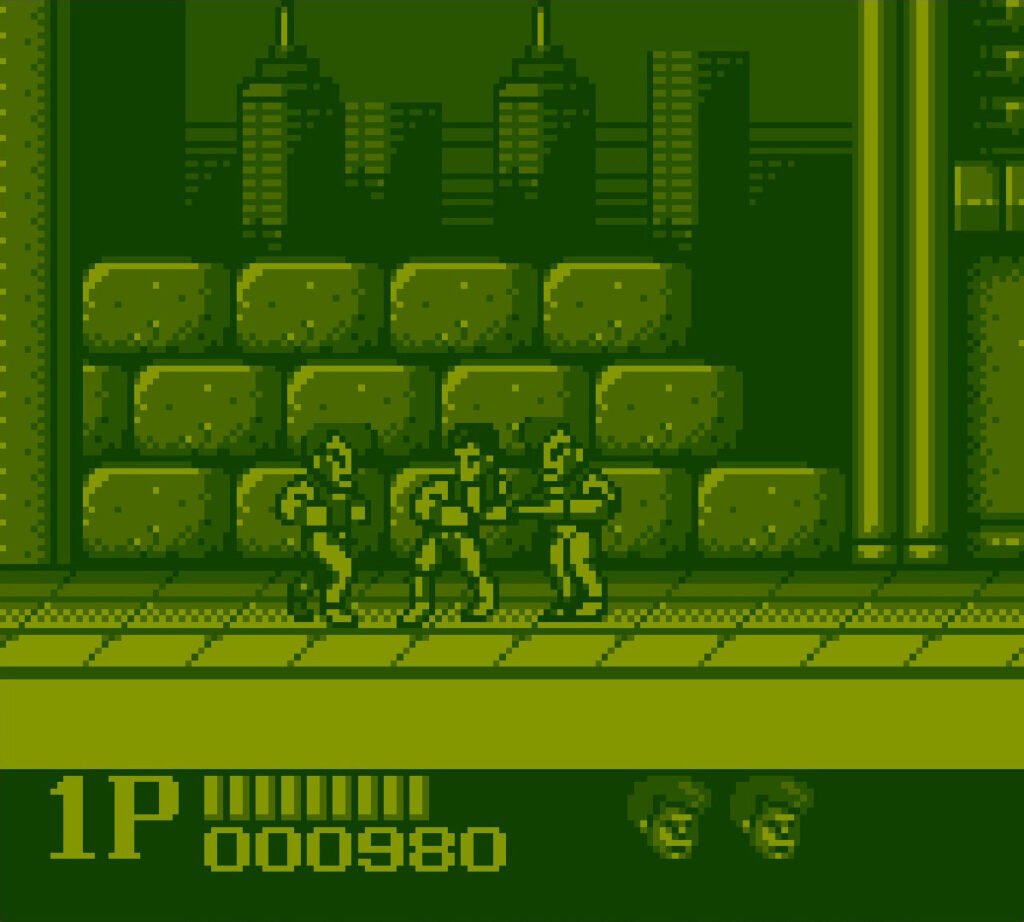
Super R.C. Pro-Am
Super R.C. Pro-Am, developed by Rare and published by Nintendo, is a racing video game for the Game Boy. Following its predecessor, R.C. Pro-Am for the NES, you race remote control cars on a series of 24 different tracks with increasing difficulty.
The game can be played solo, with two players via the Game Link Cable, or with three or four players using the Four Player Adapter. To progress through the game, you must finish in the top three to qualify for the next track. The game ends when the player fails to finish in the top three and has no continues remaining.
Super R.C. Pro-Am features diverse track layouts, ranging from straightforward ovals to intricate circuits with hairpin twists and turns. Navigate obstacles such as oil slicks, puddles, sand traps, slow cones, and tire walls, which challenge your maneuvering skills and strategic prowess.
Overall, Super R.C. Pro-Am offers an engaging racing experience for Game Boy racing game fans with various tracks, obstacles, and upgrades, providing hours of fun and challenge.
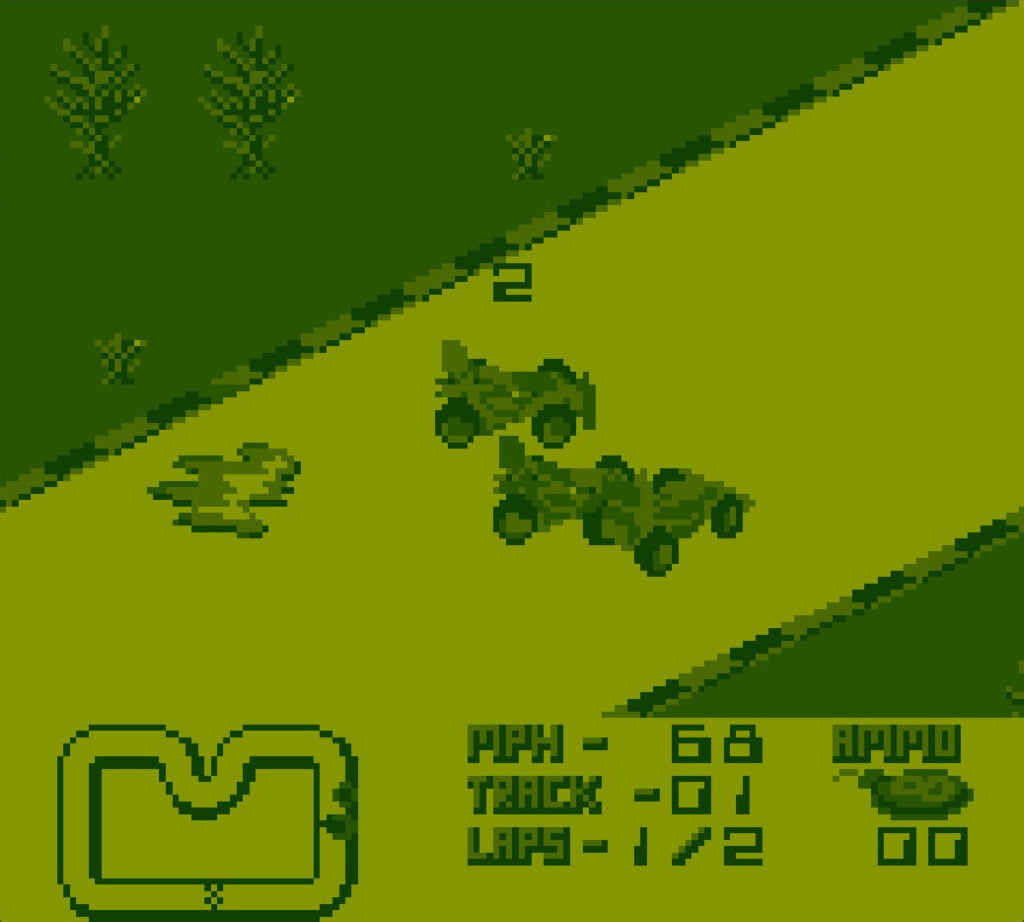
Donkey Kong Land
Developed by Rare and published by Nintendo in 1995, Donkey Kong Land is an exhilarating platform game for the Game Boy.
Created as a companion to the SNES hit Donkey Kong Country (1994), this game features similar side-scrolling platform action across 30 distinct levels. You take control of the powerful Donkey Kong and his nimble nephew, Diddy Kong, switching between the duo as needed.
The adventure kicks off when Cranky Kong dares Donkey and Diddy to replicate Donkey Kong Country’s triumph on the Game Boy’s 8-bit hardware. In response, King K. Rool and the Kremlings steal the duo’s banana hoard once more.
Journey through four captivating worlds, with progress tracked on an immersive world map. Donkey Kong Land incorporates level themes from its predecessor, such as jungles and coral reefs, while introducing new themes like cliffs and clouds. The game boasts unique level designs, fresh enemy types (including airborne pigs), and memorable bosses.
Donkey Kong Land delivers a gripping and challenging platforming experience on the Game Boy, with an impressive conversion of the SNES’ highly detailed graphics in Donkey Kong Country.
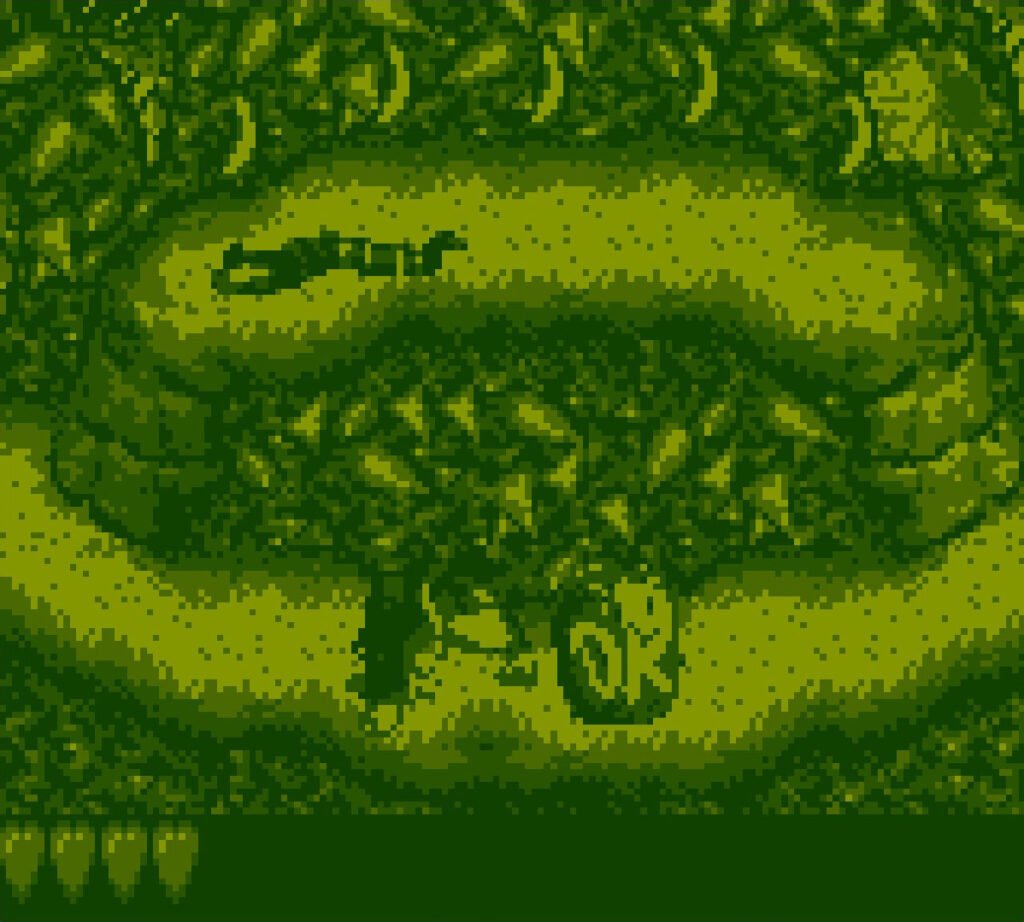
Super Mario Land
Super Mario Land, a 1989 release, brings the side-scrolling platform excitement of Nintendo’s famed mascot to the small green screen.
This inaugural entry in the Super Mario Land series captures the essence of the Super Mario Bros. games while introducing fresh elements. You control Mario on a daring mission to rescue Princess Daisy from the clutches of the sinister spaceman Tatanga.
Set in the exotic Sarasaland, distinct from the familiar Mushroom Kingdom, Super Mario Land consists of twelve enthralling levels split into four diverse worlds, each featuring a unique boss, including Tatanga himself. The game even boasts two Gradius-style shooter levels, with Mario piloting a submarine or airplane, launching projectiles at enemies, destructible blocks, and bosses.
Although Super Mario Land is smaller in scale compared to Super Mario Bros., the game still packs a punch with 12 captivating levels across four distinct worlds. After completing the game, you can test your skills in a more challenging mode teeming with additional enemies. Conquering this mode unlocks the option to start a new playthrough at any level.
Whilst Super Mario Land 2 is technically superior, this original game blew my mind having just progressed from Game & Watch handhelds, sure, the visuals are tiny, but ALL the gameplay is there.
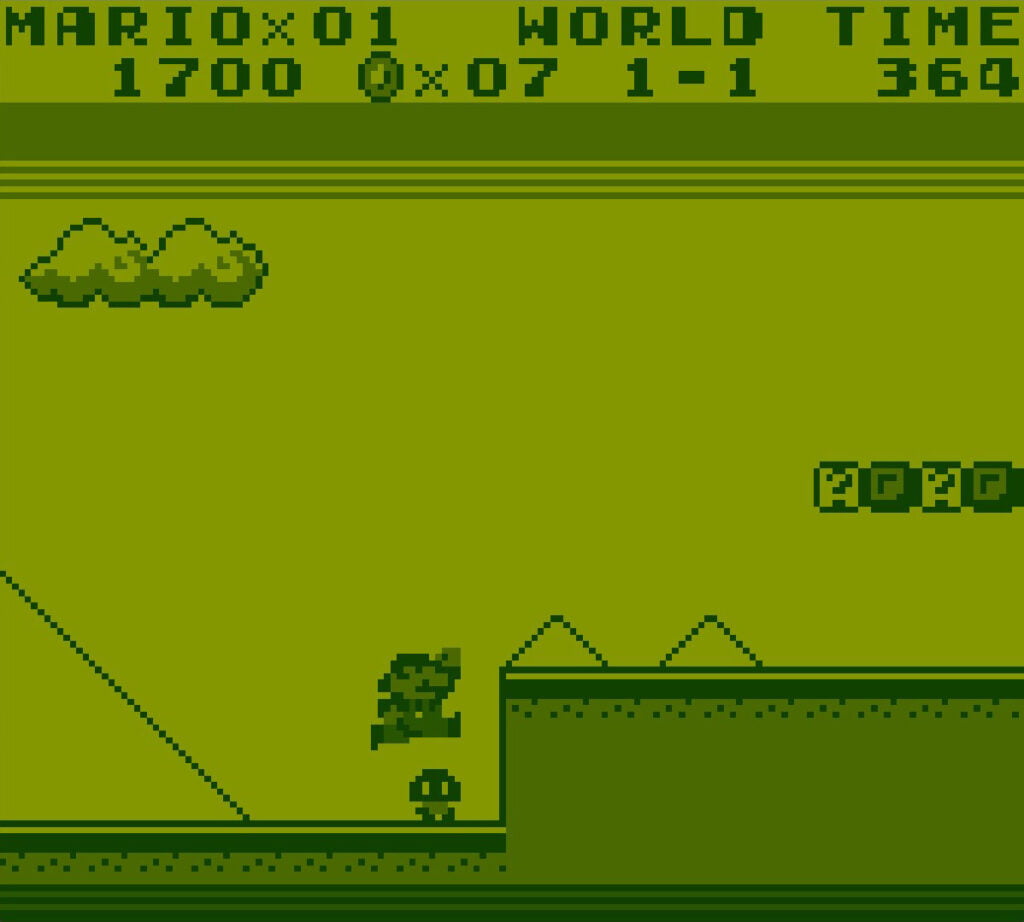

As a retro gaming & retro computing enthusiast, I enjoy sharing help guides and about retro gaming in general, when I have the spare time to do so!